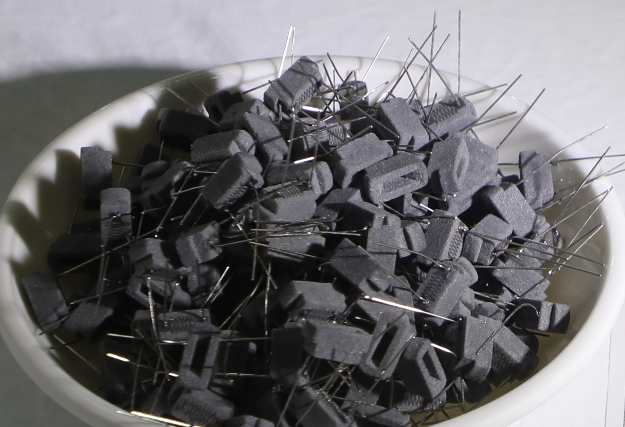Ceramic atomizing core, as a type of electronic cigarette heating element, has been favored by many users in recent years and is one of the common types of atomizing cores. It takes advantage of the characteristics of ceramic materials to give e-cigarettes a unique use experience.
1. Advantages of ceramic atomizing core
1. Better taste: Ceramic atomizer cores usually provide a purer and smoother taste. Due to the heating properties of ceramic, it can heat the e-liquid more evenly, thereby producing more delicate smoke, which is an obvious advantage for users who pursue high-quality taste.
2. Reduce the burning smell: Ceramic materials can remain stable at high temperatures and are not as easy to burn as cotton cores, so the generation of burning smell is reduced during use.
3. Longer service life: Ceramic atomizer cores have higher heat resistance and physical stability and are not easily corroded by e-liquid, so compared to traditional cotton cores, they usually have a longer service life.
2. Disadvantages of ceramic atomizing core
1. Longer heating time: Compared with cotton wicks, ceramic atomizer cores may need more time to reach the ideal heating temperature when starting to heat.
2. High cost: Due to the relatively high manufacturing costs and technical requirements of ceramic atomizing cores, their market prices are usually higher than traditional cotton cores.
3. Flavor delivery may be slow: Some users report that when switching to different flavors of e-liquid in ceramic atomizers, the previous flavor may remain for a long time, affecting the purity of the new flavor.
3. Production process of ceramic atomizing core
It usually includes the following steps:
1. Raw material preparation:
Choose high-purity ceramic powder suitable for atomization applications, such as alumina, zirconia and other materials, which have good thermal stability and corrosion resistance.
2. Slurry preparation:
Mix ceramic powder with organic or inorganic binders and solvents evenly to form a slurry with certain fluidity and plasticity. Other functional additives may be added to the slurry to improve its conductivity, oil absorption, or porosity.
3. Molding process:
The slurry is coated or filled into a specific mold using thick film printing technology, slip molding, dry press molding, injection molding, etc. to form the basic shape and structure of the atomizer core, including the porous ceramic layer and heating element area.
4. Drying and sintering:
After preliminary drying to remove most of the solvent, high-temperature sintering is performed to melt and combine the ceramic particles to form a dense ceramic body with a certain pore structure.
5. Conductive layer deposition:
For atomizer cores that need to generate heat, one or more layers of conductive materials (such as metal films) will be added to the surface of the sintered ceramic body through sputtering, chemical plating, screen printing, etc. to form a resistance heating layer.
6. Cutting and packaging:
After completing the production of the conductive layer, the ceramic atomizer core is precision cut according to the design requirements to ensure that the size meets the standards, and the completed atomizer core is packaged with external connectors, such as installing electrode pins, insulating materials, etc.
7.Quality inspection:
Conduct performance testing and quality control on the produced ceramic atomizing cores, including resistance value testing, heating efficiency evaluation, stability testing, and oil absorption and atomization effect inspection.
8. Packaging and delivery:
Products that pass the inspection are dust-proof, anti-static treated and packaged, and then put into warehouse to await shipment to downstream e-cigarette manufacturers or other related industry customers.
Different manufacturers may adjust their specific production processes based on their own technology and market needs.
Post time: Mar-15-2024





